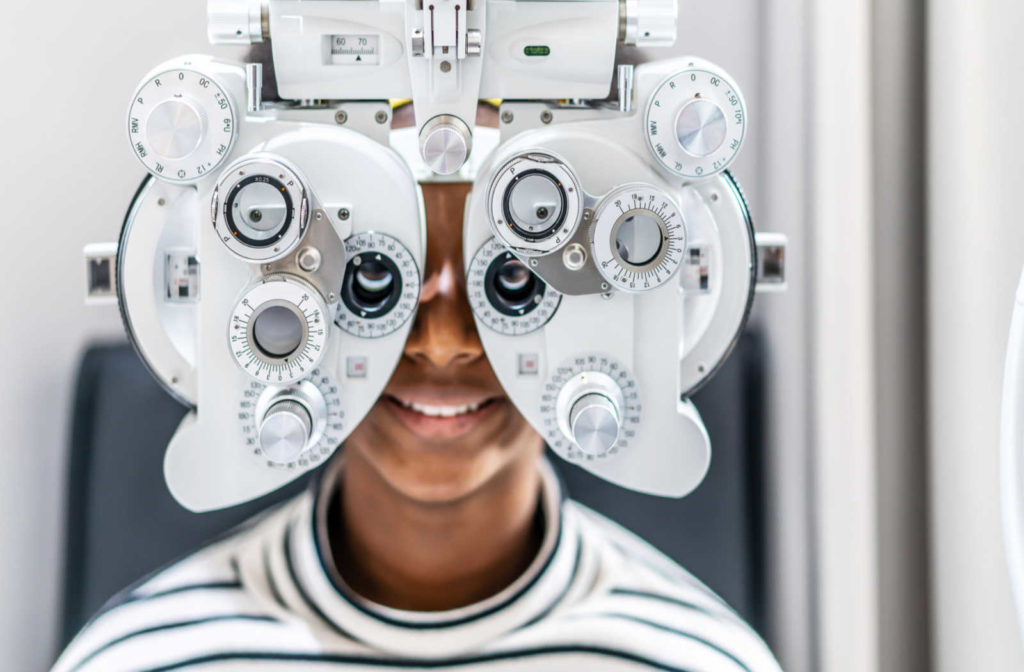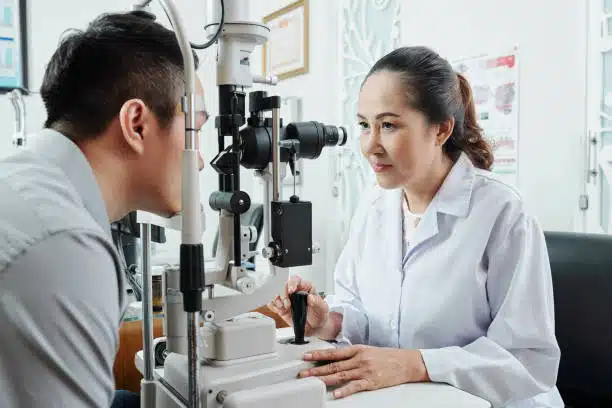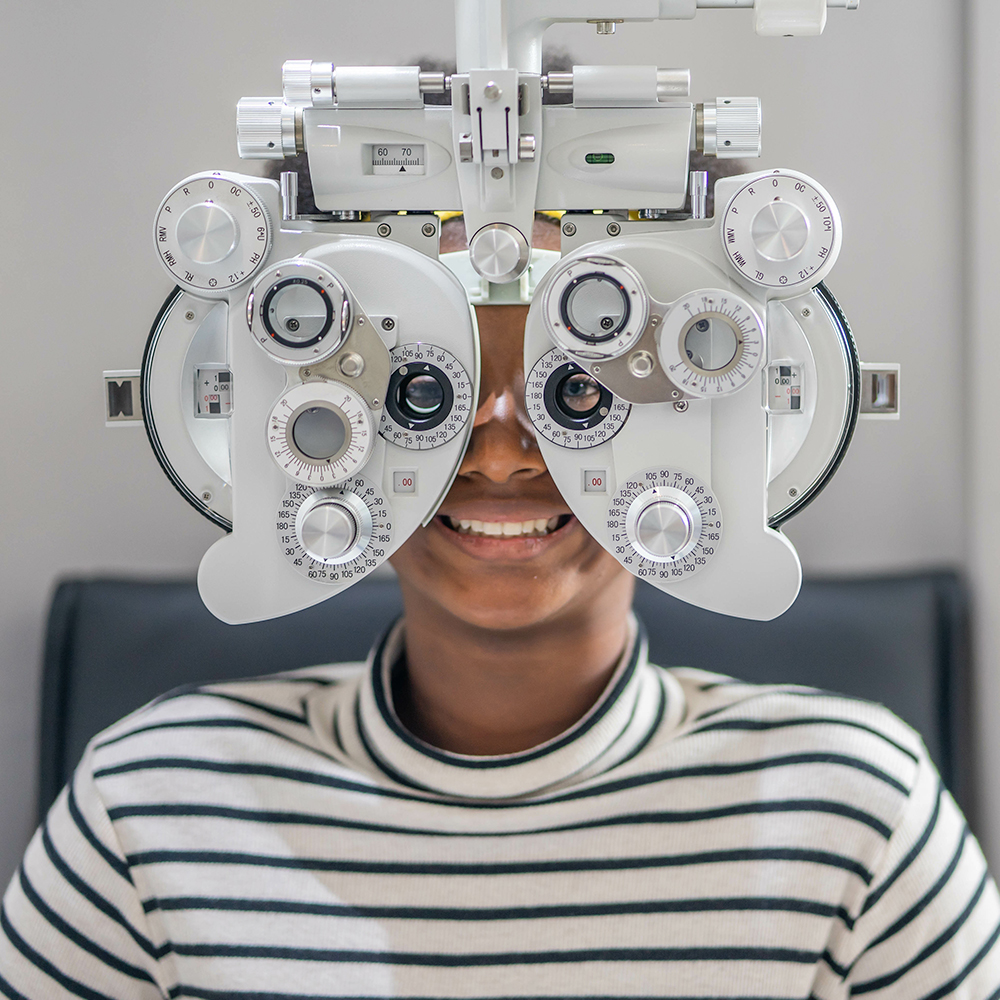Discover the most effective Optometrist Chino for Comprehensive Eye Care
Discovering the most recent Technological Advancements in Optometry and What They Mean for Optometrists
From the precision of Optical Coherence Tomography to the nuanced understandings supplied by AI-driven analysis tools, these advancements are establishing new requirements in individual evaluation and treatment. As these advancements penetrate the method, eye doctors are faced with the difficulty of embracing these tools to enhance individual outcomes.
Technologies in Diagnostic Equipment
Progressing the field of optometry, advancements in analysis tools have actually transformed the method eye treatment experts analyze and detect visual problems and eye conditions. The previous decade has actually experienced considerable technical advancements, allowing more thorough and accurate assessments. Optical Coherence Tomography (OCT), as an example, provides high-resolution cross-sectional photos of the retina, allowing for the early detection of conditions such as glaucoma and age-related macular deterioration. This non-invasive imaging method has actually ended up being vital in modern optometric technique.
An additional key technology is the intro of innovative corneal topography systems, which map the surface curvature of the cornea with accuracy. These tools are specifically advantageous for fitting get in touch with lenses and identifying corneal disorders. Digital retinal imaging has changed traditional ophthalmoscopy, providing in-depth, panoramic views of the retina that help with comprehensive aesthetic assessments.
The advancement of wavefront aberrometry has also been critical, allowing the evaluation of refractive mistakes with unequaled accuracy (Eye Doctor). This innovation helps in tailoring corrective lenses and boosting surgical end results for refractive surgical procedures. Collectively, these analysis developments encourage optometrists to deliver exceptional individual care, ensuring early intervention and customized treatment approaches, ultimately improving aesthetic wellness results
AI in Patient Administration
Structure on the structure of innovative diagnostic devices, the consolidation of artificial intelligence (AI) in client management stands for a transformative jump for optometry. AI systems are significantly employed to enhance performance, precision, and customization in person treatment.
Moreover, AI-driven platforms facilitate structured patient interactions and management processes. Automated scheduling, digital appointments, and personalized follow-up plans not only boost patient fulfillment but additionally optimize time management for experts. These systems can triage patients based on the seriousness of their conditions, making sure that those in essential demand obtain prompt interest.
In addition, AI enhances decision-making by offering optometrists with evidence-based suggestions and therapy paths. By incorporating data from electronic health records, AI tools use understandings that educate clinical decisions, decreasing the danger of mistakes and enhancing person end results. As AI proceeds to evolve, its role in client management will likely expand, reshaping the landscape of optometric care.
Advancements in Retinal Imaging
In the world of optometry, retinal imaging has actually observed amazing technological improvements that are improving diagnostic abilities and client care. Developments such as Optical Coherence Tomography (OCT) and fundus photography have transformed how optometrists envision and analyze the retina. OCT, in specific, offers high-resolution, cross-sectional photos of the retina, permitting the detailed exam of its layers. This capacity is vital for very early detection and management of problems like glaucoma, diabetic retinopathy, and age-related Clicking Here macular deterioration.
Boosted imaging methods like additional info OCT angiography are more refining diagnostic accuracy. Eye Doctor Optometrist. Such developments promote the identification of minute retinal adjustments that could represent condition development.
Additionally, innovations in synthetic knowledge are boosting retinal imaging by enabling automatic evaluation of huge datasets. These systems aid eye doctors in identifying patterns a measure of pathology, therefore enhancing diagnostic accuracy and effectiveness. Jointly, these technologies are transforming retinal imaging into a cornerstone of contemporary eye treatment, boosting outcomes and broadening therapeutic opportunities.
Teleoptometry's Expanding Function
Teleoptometry is increasingly ending up being a vital component of eye care, driven by improvements in electronic interaction and analysis devices. As optometry accepts electronic transformation, teleoptometry helps with remote consultations, permitting eye doctors to extend their solutions past conventional borders. This is especially beneficial in country and underserved areas where access to specialized eye treatment is typically restricted. By leveraging high-resolution video conferencing and advanced retinal imaging, eye doctors can perform detailed eye exams from afar, making certain prompt diagnosis and treatment.
The integration of fabricated intelligence (AI) more improves teleoptometry, enabling the evaluation of visual information and helping in the discovery of eye conditions such as glaucoma and diabetic retinopathy. AI-powered formulas can quickly interpret complex imaging information, supplying eye doctors with useful understandings that bolster clinical decision-making.
Moreover, teleoptometry sustains connection of care via seamless assimilation with digital health and wellness records (EHRs), enabling eye doctors to preserve thorough client backgrounds. When consulting with various experts., this guarantees that individuals obtain personalized and constant care also.
Regardless of these advantages, challenges stay, consisting of making certain data safety and security and taking care of person expectations. Nevertheless, teleoptometry represents a considerable stride in the direction of even more obtainable, efficient, and patient-centered eye care. As modern technology advances, its function is poised to broaden additionally.

Future Patterns in Eye Care
A myriad of ingenious patterns is readied to reshape the future of eye care, driven by technical improvements and the progressing requirements of clients. One sites significant trend is the assimilation of fabricated knowledge (AI) in diagnostics, which guarantees to improve the precision and efficiency of eye examinations. AI formulas can assess huge amounts of data from retinal photos, potentially discovering conditions like diabetic person retinopathy and glaucoma earlier than typical techniques.
Furthermore, personalized medication is getting traction in optometry, with hereditary testing educating tailored treatment strategies. This method aims to maximize client end results by customizing interventions to specific genetic accounts. Wearable innovation, such as clever get in touch with lenses, is also imminent, providing real-time monitoring of intraocular stress or glucose degrees, thus giving constant understandings right into systemic and eye wellness.
The fostering of increased truth (AR) and digital reality (VIRTUAL REALITY) in training and patient education and learning is another arising fad. These innovations supply immersive experiences that can improve understanding and abilities both for optometrists and individuals. As these fads evolve, optometrists have to stay abreast of technological advancements to offer sophisticated care, ensuring improved client end results and complete satisfaction in the vibrant landscape of eye care.
Conclusion

Jointly, these diagnostic innovations equip optometrists to provide remarkable person treatment, guaranteeing very early treatment and tailored treatment techniques, ultimately boosting aesthetic wellness results.

As these innovations proceed to progress, optometrists have to adapt and integrate them right into method, inevitably optimizing process efficiency and raising the criterion of eye treatment provided to people.